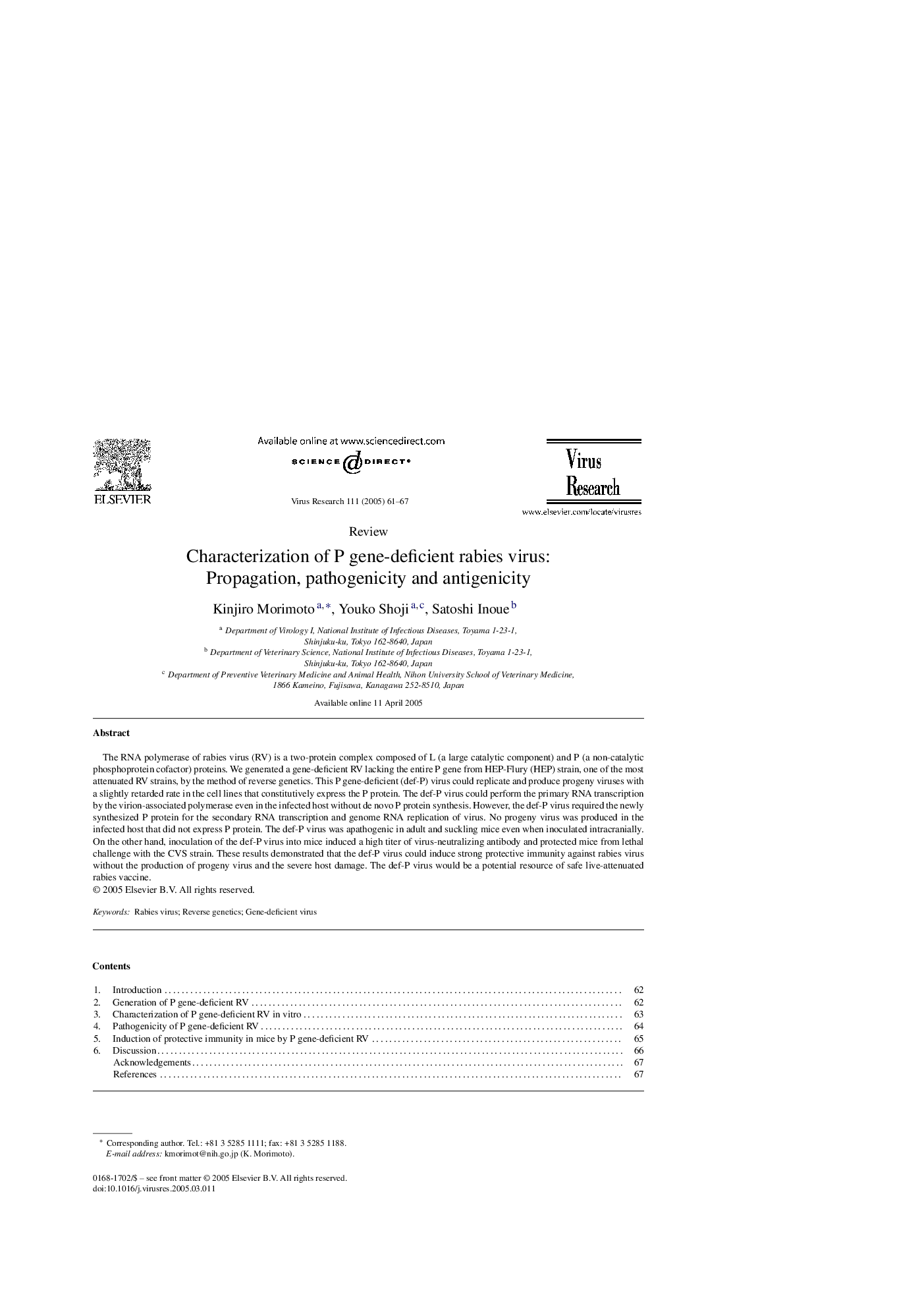| Article ID | Journal | Published Year | Pages | File Type |
|---|---|---|---|---|
| 9289359 | Virus Research | 2005 | 7 Pages |
Abstract
The RNA polymerase of rabies virus (RV) is a two-protein complex composed of L (a large catalytic component) and P (a non-catalytic phosphoprotein cofactor) proteins. We generated a gene-deficient RV lacking the entire P gene from HEP-Flury (HEP) strain, one of the most attenuated RV strains, by the method of reverse genetics. This P gene-deficient (def-P) virus could replicate and produce progeny viruses with a slightly retarded rate in the cell lines that constitutively express the P protein. The def-P virus could perform the primary RNA transcription by the virion-associated polymerase even in the infected host without de novo P protein synthesis. However, the def-P virus required the newly synthesized P protein for the secondary RNA transcription and genome RNA replication of virus. No progeny virus was produced in the infected host that did not express P protein. The def-P virus was apathogenic in adult and suckling mice even when inoculated intracranially. On the other hand, inoculation of the def-P virus into mice induced a high titer of virus-neutralizing antibody and protected mice from lethal challenge with the CVS strain. These results demonstrated that the def-P virus could induce strong protective immunity against rabies virus without the production of progeny virus and the severe host damage. The def-P virus would be a potential resource of safe live-attenuated rabies vaccine.
Keywords
Related Topics
Life Sciences
Immunology and Microbiology
Virology
Authors
Kinjiro Morimoto, Youko Shoji, Satoshi Inoue,
